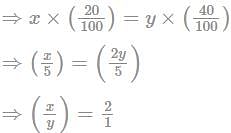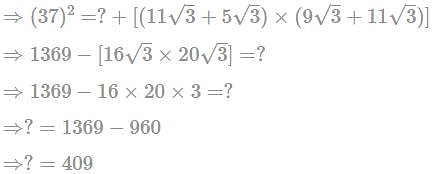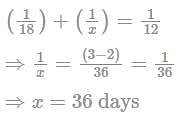Indian Army Agniveer Mock Test - 3 - CDS MCQ
30 Questions MCQ Test - Indian Army Agniveer Mock Test - 3
An ornament is sold for Rs. 13,700 at a loss of 20%. What is its cost price?
Y and Z can finish a work in 50 days. They work together for 15 days and then left. How much of the work is left?
| 1 Crore+ students have signed up on EduRev. Have you? Download the App |
Mean of 60 observations is 66. Later, it was found that an observation 24 was wrongly taken as 42. What is the corrected mean?
The difference between the compound interest and the simple interest on a sum at 5% for 2 years is 2. Find that principal amount?
Find the radius of a sphere having a surface area of 900 π cm2.
A 210 m long train takes 20 seconds to cross a 370 m long platform. What is the speed of the train?
The average of five consecutive odd numbers is 51. What is the difference between the highest and lowest number?
20% of a number is 40% of another number. What is the ratio of the first number to second number?
Two cones have their heights in the ratio 1 : 3. If the radii of their bases are in the ratio 3 : 1, then the ratio of their volumes will be:
Direction: What will come in place of question mark (?) in the following question:
Q. 
Heena and Karan together complete a work in 12 days, if Heena works alone, she completes it in 18 days. Karan alone can complete it in how many days?
The value of two adjacent angles of a quadrilateral are 125∘ and 35∘ and the other two angles are equal. Find out the value of equal angles.
Who composed the Amuktamalyada, a work on statecraft in Telugu?
Famous Cave temples of Elephanta are ascribed to:
Who among the following was honored with the 'Khel Ratna Award' in 2013?
Which major river flows between the Vindhya and the Satpura Mountain ranges?
Keisabadi is a popular dance form of ___________.
In which of the following cases did the Supreme Court of India pronounce the verdict that the basic structure of the constitution cannot be amended by the parliament?
Find out the correct sequence of planetary winds found from the equator to pole:
A judge of the High Court retires at the age of ________.
The term 'Duckworth-Lewis' is associated with which sport?
Which national leader was the editor of the Marathi newspaper, Kesari?




 then what is the value of K?
then what is the value of K?

 equal to which of the following?
equal to which of the following?
























